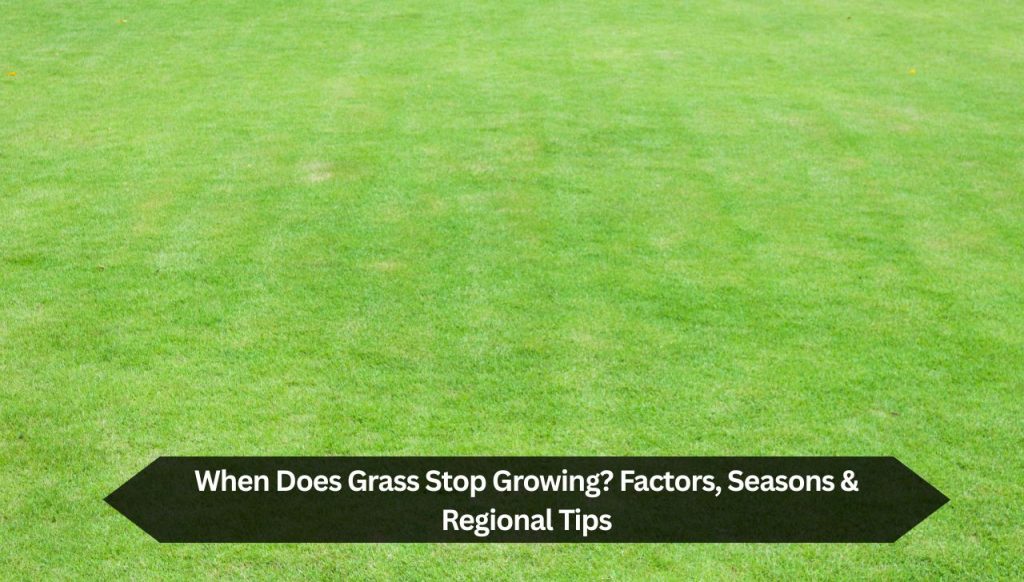Introduction
Ever wonder why your lawn turns green almost overnight in spring? One week it’s dull and dry, and the next—it’s full of life. Grass doesn’t grow on a schedule. It reacts to the environment.
Grass wakes up when the temperature is right. Not too cold. Not too hot. And not just the air—soil warmth, sunlight, and water matter too. If you want your lawn to thrive, timing is everything.
Let’s break down what makes grass grow—and when to expect it.
Factors That Affect Grass Growth
Grass growth depends on a few main things:
1. Temperature Grass types fall into two categories: cool-season and warm-season. Cool-season grasses (like fescue or ryegrass) grow best when it’s 60–75°F. Warm-season grasses (like Bermuda or Zoysia) prefer 80–95°F. Outside those ranges, growth slows.
2. Soil Temperature Soil temperature triggers seed germination. Cool-season grass needs soil around 50–65°F to sprout. Warm-season grass waits for 65–70°F.
3. Moisture Grass needs water to grow. Dry soil leads to dormancy. Too much water invites disease. Spring rains help, but overwatering hurts more than it helps.
4. Sunlight Grass needs light to make energy. More daylight in spring boosts growth. Shaded lawns may struggle without help.
5. Mowing Habits Cutting too short weakens grass. Leave blades a bit taller to shade soil and hold moisture.
6. Nutrients Grass thrives with nitrogen. But too much fertilizer can burn it. Use the right mix at the right time.
Dive Deeper : When to Fertilize Lawn: A Simple Guide for Healthy Grass
Seasonal Timeline for Grass Growth
Let’s look at how grass acts through the year:
Spring (March–May) Cool-season grasses start strong. Soil warms, days get longer, and growth takes off. Warm-season types begin later, once it’s hot enough.
Summer (June–August) Warm-season grasses hit peak growth. Cool-season ones may slow down or go dormant during dry heat.
Fall (September–November) Cool-season grasses bounce back. It’s a good time to seed or fertilize. Warm-season grasses slow down as temps drop.
Winter (December–February) Most grass rests. Northern lawns go fully dormant. In warm areas, some grass may stay green but grow slowly.
Regional Differences
Location shapes your grass schedule. Here’s how it changes across regions:
Northern U.S. Cool-season grasses dominate. Growth starts around late March or early April—once snow melts and soil warms. Another big boost comes in fall.
Southern U.S. Warm-season grasses thrive. Growth begins in late April or May when temps stay warm. Lawns often stay green into fall.
Transition Zone (Mid-Atlantic and Central U.S.) This area sees both grass types. Managing lawns here means mixing seed types or overseeding as needed.
Mountain and High Desert Regions Higher elevations delay growth. Cooler nights keep soil from warming quickly.

Implications for Lawn and Turf Management
So why does this matter? Because timing your lawn care saves money, water, and frustration.
Homeowners Cool-season lawns? Fertilize and seed in early spring or early fall. Warm-season lawns? Wait until late spring when growth kicks in. And skip the weed-and-feed in winter—it’s too early.
Turf Managers Use soil thermometers to track the real start of the growing season. Match mowing height and fertilizer to the grass type. Smart irrigation tools help avoid waste. And don’t forget: local weather beats the calendar every time.
Dive Deeper : How Early Can I Cut My Grass? A Practical Guide for Healthy Lawns
Conclusion
Grass isn’t lazy. It waits for the right moment. It listens to soil temperature, sun, and rain before growing. When you learn that rhythm, lawn care gets easier.
Want a lush lawn? Don’t rush it. Let nature lead. Watch the signs. And act when your grass is ready—not just when the calendar says so. Season by season, that’s how a great lawn grows.

